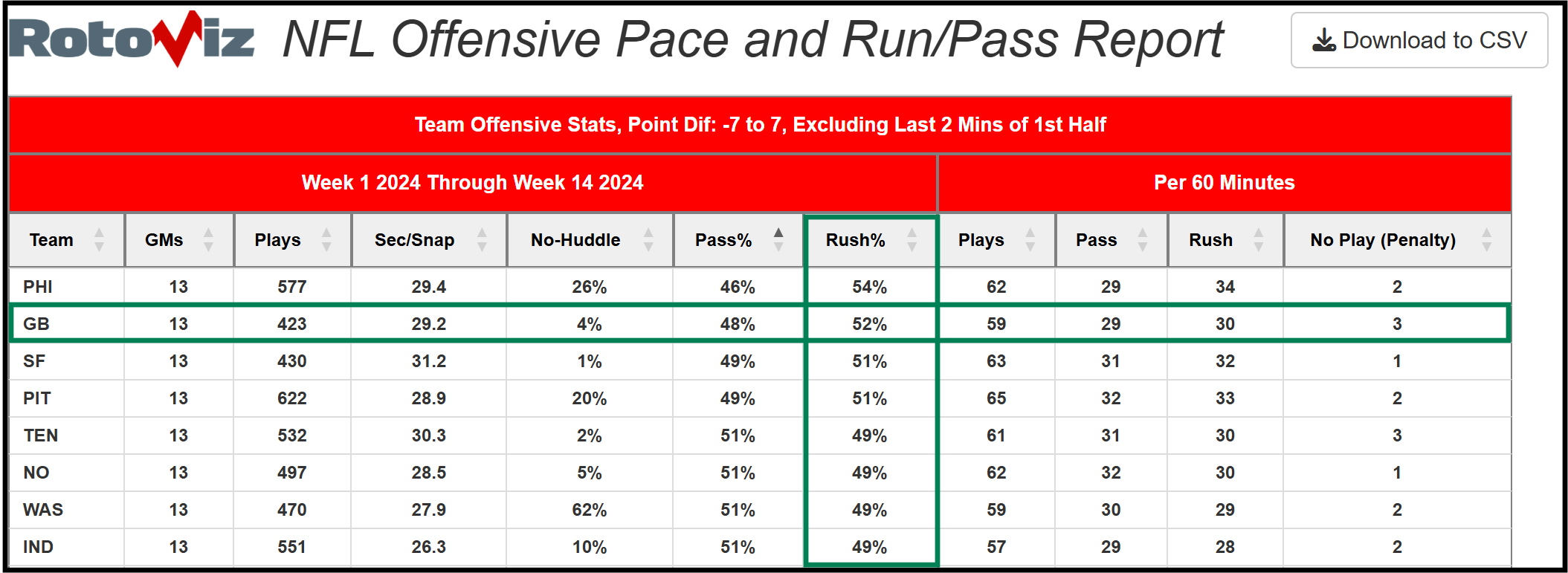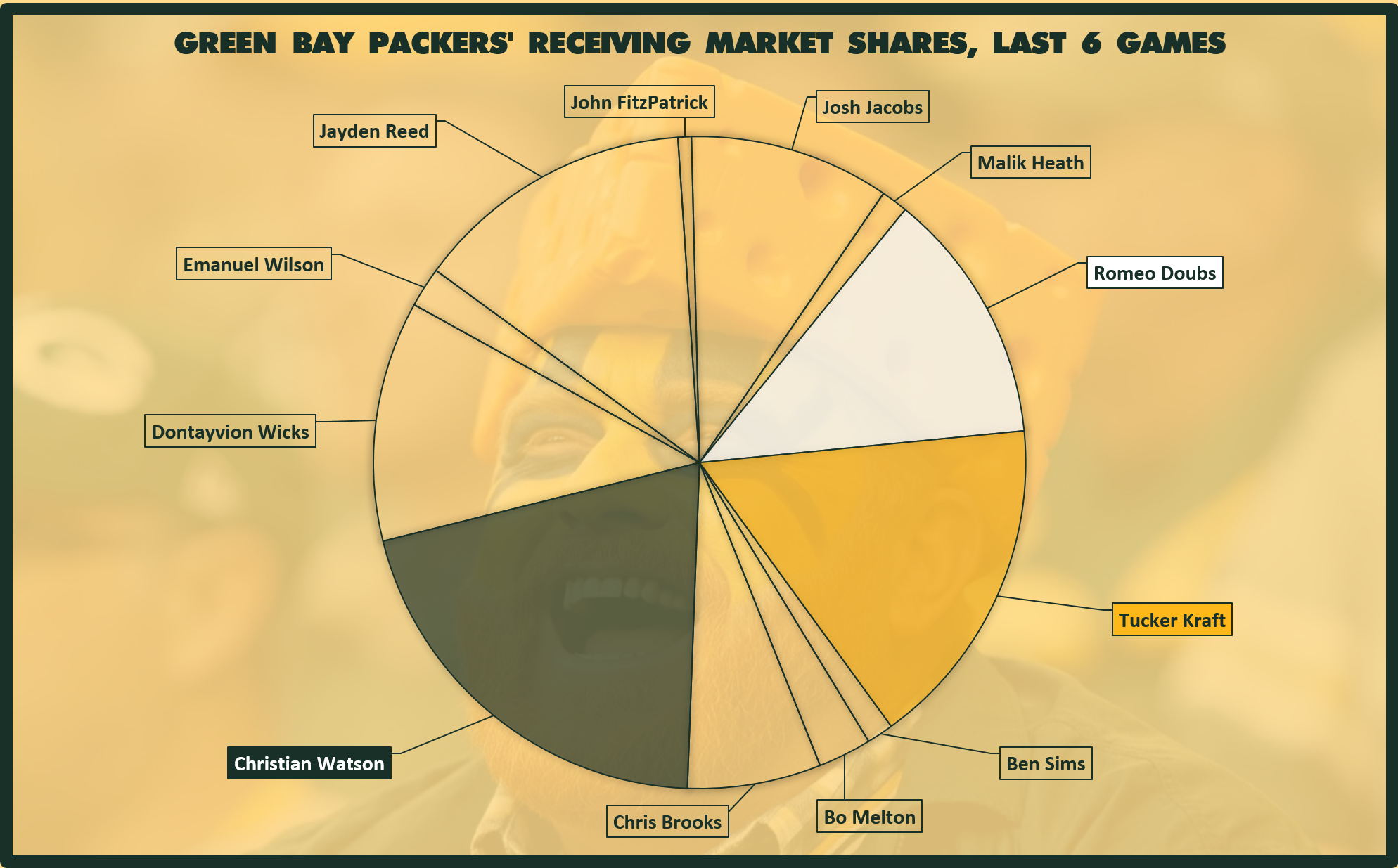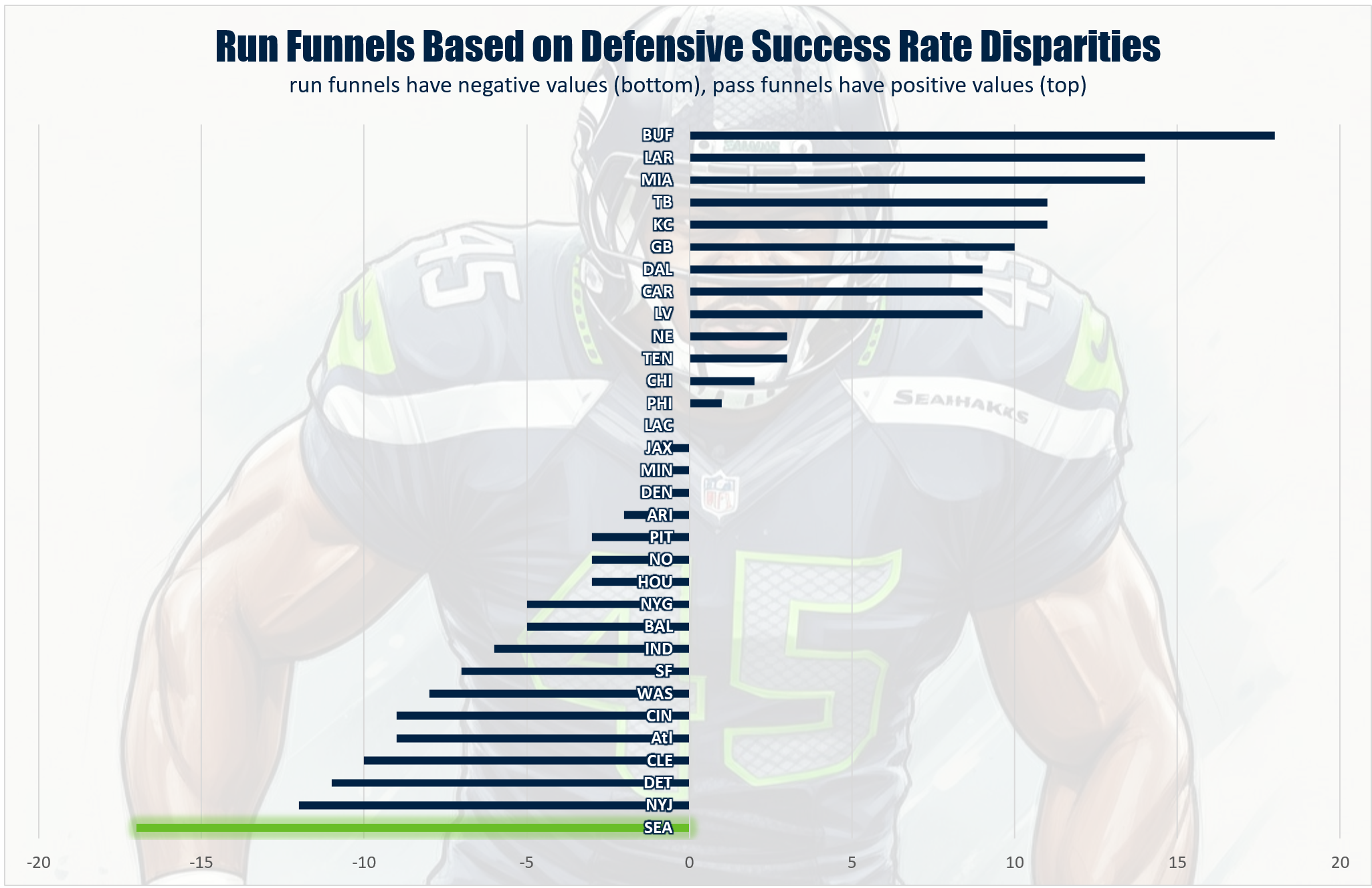
Quick Slant: SNF - All Could Still Be Lost
Packers @ Seahawks, Sunday @ 8:20 PM
Seattle’s epicenter cozies down over Puget Sound in gray diffused light—soft and calm, not oppressive. Framed by evergreen trees, its towers loom like jagged teeth over the smell of salt and pine and the surprising echo of nothing for miles around. The rain falls steadily as endless, whispered drumming on the pavement while rows of lush mountains serve as overseers. The sound of water against wood, of ferries cutting through dark waves—in the gloam, they are all that moves. Seattle is tangled in its contradictions—tech barons and hipsters, progress and decay, development and quiet; among it are progressives, college students, and blue-collared longshoremen, entangled, forever watching the rain.
A microcosm for it all is Lumen Field, where the Seahawks and their devoted fan base, the 12th Man, are far from tranquil; there is no evidence there of Subaru-powered tree-hugger excursions, no quiet bookstores filled with the aroma of fresh joe, no unicycle parking, and no shunning of letter-jacket jock culture. They are one on Sundays—no matter where they are on Tuesdays—united by the common goal of cheering the home team on to victory.
Sunday, the Seattle Seahawks invite the Green Bay Packers, holders of a culture as distant from Seattle as its geography. Green Bay becomes annually conquered by the most brutal winter the continental United States knows; it is endlessly dark, mantled in snow, and glacially cold. One thing warms it—a champion for this tiny tribal community of weathered, unflashy normal folk: the Packers. Its cathedral—Lambeau Field—towers over the rows of quaint homes and sleepy cars lining the silent streets of the smallest town in North America to hold a sports team; Green Bay is less populated than Edinburg, Texas; Centennial, Colorado; or Davie, Florida. But the fan base for Green Bay isn’t exclusively found in a warm local sports bar under the low hum of conversation and clinking of glasses. It is a global brand with fans on all seven continents.
These teams have few threads that tie them; mostly it is an ongoing argument, over a decade old now, about whether Golden Tate or M.D. Jennings had possession, or memories of a classic NFC Championship along the trail of heartbreaks that was the 2015 NFC playoffs (hard luck was passed from team to team like the videotape from The Ring that year, as Detroit lost a heartbreak to Dallas, who lost a heartbreak to Green Bay, who lost a heartbreak to Seattle, who lost a heartbreak to New England, each in the final moments).
The Packers are 9-4, and the Seahawks are 8-5. Each feels the weight of the moment, realizing the fragility of all they’ve achieved. The playoffs only take so many comers; these teams have come too far to be left out now. Yet, they must take matters into their own hands here and now, or all could still be lost.
Packers’ Implied Team Total: 23.5
The Packers rank eighth in EPA per play and 16th in offensive success rate. They rank fifth in EPA per dropback and 15th in offensive success rate on dropbacks.

Green Bay is led by Matt LaFleur, who has been their head coach since 2019, and since then, it has been the second-slowest team in the league in neutral script seconds to snap. That he trails only Kyle Shanahan’s 49ers in that time seems telling; the two served under Kyle’s father, Mike, in Washington and are missionaries for the modern zone-read. It also may have much to do with Aaron Rodgers playing there until 2022; Rodgers has been historically measured at the line due to his lengthy pre-snap read process.
Since Rodgers departed, the Packers are 23rd in the league in neutral script seconds to snap; it’s not exactly speeding, but it marks a considerable improvement. They have typically been a little on the run-heavy side under LaFleur, but they have taken this to a new level in 2024, ranking second in neutral run rate at 52%, trailing only the Eagles.

Between their run-heaviness and below-average time at the line of scrimmage, the Packers have logged only 63 offensive plays per 60 minutes, which is below the league average but directly in line with what LaFleur’s Packers have generated since he took over.
A lower play volume is a poor foundation for fantasy production; what we need from a team to make that work fit fantasy is good efficiency and a narrow distribution of touches.
The Packers typically breed good efficiency. It is hard to credit LaFleur entirely for Aaron Rodgers's successes under his supervision from 2019 to 2022, when Rodgers won two of his four career league MVP trophies. Rodgers had top-ten FPOE among QBs 11 times, spanning roughly a decade, many before LaFLeur had even had the privilege. However, with or without Rodgers, several players have achieved high FPOE wearing the cheese-colored helmet since 2019. It fluctuates, but generally, most teams accumulate about two players/season with 15+ FPOE; LaFleur has 4.5 players/season hit the mark since taking over in Green Bay.

Though there is still time for any player to accrue negative FPOE and be dragged back under the threshold, there are six Packers who have already hit 15+ FPOE in 2024.
One such player is QB Jordan Love, who sits on 34 FPOE to this point; this is nine-tenths of a point under Love’s accumulated total from a year ago, so we would assume he could beat that with four games to play. Love comes in well under the 2023 pace on total volume, and so he has lower EP and, subsequently, lower PPR. This may be related to a significant knee sprain he endured in the waning moments of his first game of the season; then again, it may not.
The concentration of targets is not as concise as we would hope. Only three players have more than a 15% target share in the Packers’ past six games: Christian Watson (21%), Romeo Doubs (18%), and Tucker Kraft (17%). Meanwhile, three additional pass-catchers have a 10-14% share, crowding the pass volume and reducing the total targets for the players we would like to play in fantasy. Target shares of 18–21% can be viable in deeper PPR leagues when tied to high-volume offenses (e.g., Cleveland). However, low-volume offenses like Green Bay’s typically cannot reliably support players at this level.

Love ranks 22nd in dropbacks. Watson, Doubs, Jayden Reed, and Dontayvion Wicks cannibalize each other on this limited number of opportunities. Subsequently, all have targets/G numbers between 3.8 and 5.3, all dreadfully low. Frankly, the Packers’ pass-catchers with lower ceilings—Doubs and Wicks, specifically—are almost unplayable. Watson and Reed are explosive players capable of blow-up performances; they are at least in weekly consideration for the fact that they could hit a massive upside on any given Sunday, but they are unmistakably volatile. We should think of these players almost as we would Marquez Valdes-Scantling or Nick Westbrook-Ikhine.
Tucker Kraft is well outside the top 12 in target share among TEs at 17% as well; he draws 4.2 targets/G, which is still poor, even for a TE, ranking 18th. Between the low market share and play volume, Josh Jacobs is drawing just 2.5 targets/G, an almost negligible amount.
The Seahawks rank ninth in EPA per play allowed and 13th in defensive success rate. They also rank ninth in EPA per dropback allowed and 13th in defensive success rate on dropbacks.

Seattle ranks in the top ten in percentage of man defense alignments, but they still run near the 2:1 zone-to-man ratio most teams stick to. Like many, they spend over 50% of their time in Cover 3, which they run the most, and Cover 1. The only type of coverage Seattle runs an overly high amount is Cover 0, which they run at 6.5%, third-most in the league.
Love plays above average against the types and rates of coverages the Seahawks run. He ranks 10th among QBs in Fantasy Points’ Matchup Expected Fantasy Points model this week. According to the model, Watson is the best-equipped to face the types and rates of coverages the Seahawks utilize, ranking 22nd among all WRs and TEs. Kraft ranks 32nd and Reed ranks 36th. No one else cracks the top 50.
The Seahawks have a relatively strong secondary, led by CB Riq Woolen and slot CB Devon Witherspoon and a strong pair of safeties, Julian Love and Coby Bryant. The weakness in the secondary is Josh Jobe, who plays either outside CB.
The natural inclination is to believe the Packers will attack Jobe constantly; this becomes tricky when a defense has only one defined weakness because they become inclined to apply bracket coverage to reinforce their disadvantage. All things considered, the matchups shouldn’t be easy for Green Bay, and they will hold no advantage against this strong Seattle secondary. Kraft may find a little room to succeed; his most common adversary should be Ernest Jones, over whom he should hold an advantage.
The Packers rank ninth in EPA per rush and 17th in offensive success rate on rushes. The Seahawks rank 16th in EPA per rush allowed and 29th in defensive success rate on rushes. The disparity between their EPA and success rate says that the Packers are better at preventing bigger plays on the ground than winning individual plays against the rush.
Based on success rate comparisons, the Seahawks' defense is the most pronounced run funnel in the league. Since this is what the Packers wish to do anyway, this sets up very well for Jacobs to keep rolling.

Jacobs is the third-leading rusher in the NFL. As a fantasy asset, he is certainly valuable. However, he is infrequently utilized as a pass-catcher, which keeps him out of the upper-echelon. It isn’t as if someone else is filling the role; this is more than likely rooted in the same thing that keeps everyone’s target shares down, which is Green Bay’s general dedication to a wide target distribution.


